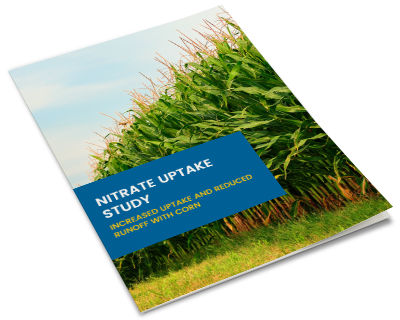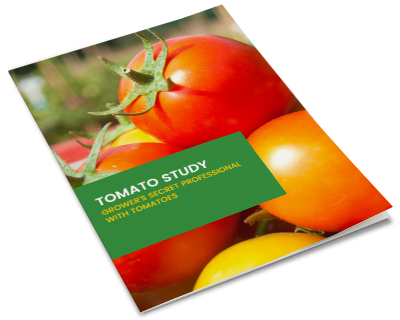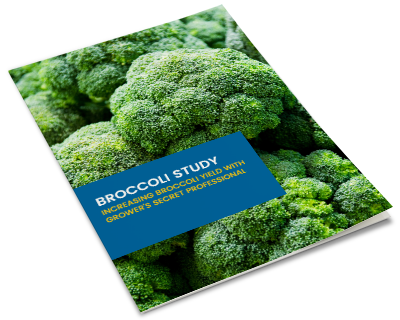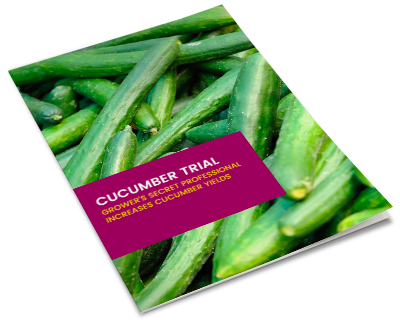|
Posted By: Wesley Chun, Ph.D. / |

Introduction
In 1967, Gene L. Coon, in the Star Trek episode “Devil in the Dark,” introduced a silicon-based life form, the Horta. The story exemplified author Andrew Smith’s axiom “People fear what they don’t understand and hate what they can’t conquer.” As a scientist, the show resonated deeper. I immediately recognized that silicon (Si) and carbon (C) have many similarities. Both are members of the Periodic Table Chemical Group 14. Group 14 members are able to form four chemical bonds. Carbon is the key element to all life forming bonds with other elements like hydrogen, nitrogen, and oxygen. Silicon can also bond with hydrogen, nitrogen, and oxygen. Back then, it was thought provoking on why life did not involve silicon. Today, we know that modern day Hortas exist on Earth and silicon is very important if not essential for plant and animal life.
Silicon is the second most abundant chemical in the earth’s crust behind oxygen (O). It is an essential element for diatoms, scouring rushes, and members of the golden algae. When readily available to plants, Si plays a large role in plant growth, mineral nutrition, mechanical strength, and resistance to fungal diseases, herbivory, and adverse chemical conditions. However, Si does not fit the definition of an essential element in plant nutrition. It does not play a major role in the inorganic nutrition of a plant and it is not part of an essential plant constituent or metabolite. Lack of support of Si as an essential element rests in the iniquitousness of Si. It is experimentally difficult to create Si-free test environments to demonstrate that Si is needed to complete a plant plant’s life cycle.
However, data shows Si is a major constituent in higher plants and the value of Si in crop productivity has been demonstrated. Today, application of Si fertilizers is very common in crop production systems. Silicon is thus recognized as a beneficial element for several crops and can be considered as a quasi-essential element.
Silicon in Plants
Silicon is a chemical element that is found in the form of silicon dioxide (SiO2) in a wide array of crystalline, poorly crystalline, and amorphous phases in the soil. Silicon can be taken up by plants via passive and active uptake mechanisms as a water soluble silicic acid (H4SiO4). It can be deposited in and around leaf epidermal cells. When water is removed, these are condensed into hard polymerized silica gel SiO2.nH2O called phytoliths. Deposited silica is immobile and cannot be translocated to new growing leaves. Silica may be deposited in cell lumens, cell walls, and in intercellular spaces or external layers. It is present in roots, leaves, and inflorescence bracts of cereals. In roots, silica is deposited mainly in the cell walls. Plant hairs or trichomes are often sites of deposition.
Monocotyledonous plants can accumulate Si from 5 to 10% in tissues, much higher than nitrogen or potassium. In many plants, silica is present at concentration levels similar to the essential macronutrients. Based on foliar Si content, plants are grouped into strong accumulators, intermediate accumulators, and non-accumulators. In general, monocotyledonous plants such as wheat, sugarcane rice and barley are are intermediate to high accumulators of Si. Most dicotyledonous plants such as begonias and geraniums are low accumulators. Localization of Si differs between plants. Cucumbers and conifers accumulate Si in their leaf tissues. Chinese cabbage, coffee, green onions, peppers, radishes, and tomatoes have higher Si concentrations in the roots. The table below describes the three categories and provides plant examples.
Table 1. Examples of Plants That Are Strong, Intermediate, and Non-Accumulators of Silicon
|
Strong Accumulators |
Intermediate Accumulators |
Non-Accumulators |
|
Conifers |
Chrysanthemums |
Begonia |
|
Ferns |
Cucumbers |
Geranium |
|
Horsetail (Equisetum) |
Marigold |
Gerbera |
|
Mosses |
New Guinea Impatiens |
Pansy |
|
Rice |
Pumpkins |
Petunia |
|
Sugarcane |
Rose |
Snapdragon |
|
|
Squash |
Sunflowers |
|
|
Wheat |
Tomato |
|
|
Zinnia |
|
Knowledge of a plant’s Si accumulation ability is essential in determining your Si fertilization needs. Plants that are strong and intermediate Si accumulators will grow normally but may exhibit deleterious effects when plant available Si is deficient. For example, the incidence of lodging and damage to stems increases in rice, wheat, and other graminaceous crops in the absence of Si. Freckling on sugarcane leaves occur when Si availability is limited. Plants that are non-accumulators of Si may be sensitive to elevated Si levels. Silicon in excess of 200 ppm in the water supply may reduce fruit set and cause malformed fruits in tomatoes, cucumbers, and strawberries.
Silicon in Soils
Silicon in soil can vary from <1% to 45% dry weight. Soils commonly contain as much as 30% Si, mostly in the form of insoluble crystalline and aluminosilicate minerals and rocks which are not freely available to plants. While most soils are abundant in silicon, the amount of silicon available to the plant varies. Oxisols and Ultisols, soils that are highly weathered, leached, acidic, and low in base saturation, have low plant available silicon. Histosols, soils with high levels of organic matter and very low mineral content also have low plant available silicon. Soils that have high concentrations of quartz (sandy soil) and those that are under long term crop production have low plant available silicon.
Silicon is available to plants as silicic acid (H4SiO4). Traditional thought is that plant available Si is derived from solvation of primary and secondary Si minerals. Availability is affected by pH, temperature, particle size, water, organic matter, and redox potential. The major factor affecting soluble silicon is pH. Maximum adsorption of silicic acid to the solid phase in soils occurs between pH 9 and 10. Application of acid producing fertilizer to lower soil pH will increase H4SiO4 availability in the soil solution. Liming and high organic matter decreases Si availability. Saline soils have increased adsorption and coagulation of silicic acid so supplemental Si fertilization is needed to improve salt tolerance in plants. Seasonal differences in Si availability has been observed that corresponds to the return of Si via plant litter to the soil. In cropping situations, Si removed with harvested crops decreases plant available Si. Supplemental Si fertilization is needed to replace removed Si if solvation and water introduced Si is insufficient to beneficially affect plants. Thus, Si fertilization is being used more frequently in today’s agriculture.
Silicon Deficiency Symptoms
Silicon is naturally abundant in soil and water so visual symptoms of a Si deficiency are not easily observed. The ubiquitous presence of Si in soil and water is problematic for creating growing conditions where Si is absent. So generalized Si deficiency symptoms for plants remain undefined. There are examples where Si fertilization may be beneficial or needed as demonstrated by plants receiving Si fertilizers growing better than plants without Si supplementation. Si supplied plants often have less disease or damage from pathogens and pests, improved tolerance for drought and other abiotic stresses, increased stem strength, and reduced abiotic symptoms such as freckling in sugarcane. When Si levels in soil are deficient, plants may show symptoms of Mn, Cu, and Fe toxicity.
Fertilizing with Silicon
The use of Si fertilizers began in the 1950s when researchers and growers in Japan started using a slag, a byproduct of the iron industry, to improve degraded rice paddy soils. Traditionally, Si needs were met with Si from soil, irrigation water, and return of straw to the paddies. However, the practice of recycling the biomass was used less frequently and degradation of rice crops increased. A food shortage after WWII prompted efforts to improve the condition of rice paddies. The Ministry of Agriculture, Forestry and Fisheries of Japan started trials in 1952 and determined that slag was rich in calcium silicates, and its use as a fertilizer helped restore productivity to rice paddies. Soon it became widely used as Si fertilizer. In America and Europe, slag was used for liming purposes. Si fertilization in the US became an established process in the Everglades Agricultural Area in south Florida for sugarcane and rice. Today, Si fertilization is a globally accepted practice.
Crop production removes large quantities of Si from soil. It is estimated that the amount of Si removed annually by global agricultural crops is between 210 to 224 million tons. High Si accumulating crops such as sugarcane can remove 267 pounds of Si/ac/yr. In comparison, sugar cane removes about 100 pounds of nitrogen a year. In the US alone, estimated Si annual removal for all crops are estimated at over 21 million tons.
It is estimated that five years of continuous cropping of rice without replenishing Si will exhaust available silicon from a field. Thus, Si fertilization is needed, depending on the crop and Si replenished from the soil phase and irrigation water. Calcium silicate (CaSiO3), from mill slag byproducts and the mineral wollastonite are used as Si fertilizers. CaSiO3 fertilizers also function as a liming agent in low pH soils. Other silica fertilizers are potassium silicate (K2SiO3) and sodium silicate (Na2SiO3).
Crop Response to Silicon
Plants that are strong to intermediate accumulators of Si respond well to Si fertilizer supplements (ex. Corn, cucumber, oats, pumpkin, and wheat). In the 1950’s slag SiO2 from the iron industry was recognized and used to revitalize rice paddies in Japan. Researchers in Hawaii demonstrated that silica reduced severity of a UV light caused physiological problem called sugarcane freckling. Si fertilization boosts tolerance to abiotic and biotic stresses in banana, rice, sugarcane and tomato.
Silicon fertilization supports two different mechanisms that leads to observed crop responses. The first is the physical deposition of Si in and around cells that increases stem strength (grain crops and poinsettia), and forms physical barriers that restrict pathogen penetration and colonization, and reduces herbivory. The second mechanism is activation of plant related defense genes that are involved host plant resistance mechanisms such as lignin biosynthesis (strengthens cells walls and xylem vessels), production of phenolic compounds, production of phytoalexins, rapid hypersensitive reaction, earlier epidermal cell death. When plants are attacked by pathogens, Si treated plants show increased production of induced host plant resistance metabolites such as reactive oxygen species, hydroxyl radicals, antioxidative enzymes (peroxidase, catalase, polyphenol oxidase, superoxide dismutase, and phenylalanine ammonia lyase).
Silicon Toxicity Symptoms
Silicon toxicity in plants are rare and has only been reported in an experimental situation.
Summary
Silicon is not recognized as an essential plant nutrient. However, the agronomic benefits of Si fertilization on many crops warrants its consideration as a beneficial element especially under continuous cropping systems. The need for Si fertilization is dependent on the crop, crop management practices, and the level of plant available Si in the soil.






